What’s the Best Type of Stretching for You
 To answer this question, we need to first look at the different types of stretching there are. After which we need to ask ourselves why we are doing the stretching. The reason for this is that there are very different outcomes for the types of stretching we are doing and staying healthy is the number one goal. So, let’s delve into the different types of stretching.
To answer this question, we need to first look at the different types of stretching there are. After which we need to ask ourselves why we are doing the stretching. The reason for this is that there are very different outcomes for the types of stretching we are doing and staying healthy is the number one goal. So, let’s delve into the different types of stretching.
The most common form of stretching is called static stretching. This is the style of stretching that most people think of when they want to stretch. The key component for static stretching is the length upon which you stretch the muscle. There are actually two types of static stretching, static-passive and static-active stretching. Both forms require you to hold the stretch for a certain length of time, however one method is performed by using props or assistance while the other is performed through muscle activation. There is also dynamic stretching and ballistic stretching.
Static-Passive stretching is slow and methodical where one will hold a stretch for 30 seconds or longer, in which you would use a prop like a chair or band to pull you into a stretch, or an assistant to help aid in your stretching. Think about stretching your hamstrings (back of the thigh) where you lie on your back and then using a band that is attached to your foot, you pull the leg into a greater stretch or another person lifts your straight leg up towards the ceiling and pushes your leg up and towards your chest until you feel a stretch in the back of your thigh, and then hold it for 30 seconds or longer. You see, by holding the stretch for that length of time, you allow the muscle to go beyond the stretch reflex, the point where the muscle initially tightens to protect from injury, and fully relax to lengthen the muscle fibers.
This style of stretching should be performed after an activity or if you just need to release tight muscles to make everyday living easier, after getting them warm. It should not be performed prior to any sort of higher intensity activity for fear of stretching out the muscle too much where your body may not be ready or strong enough to come back into a safe position fast enough. This is where injury can occur. This leads us to our next form of static stretching, static-active stretching.
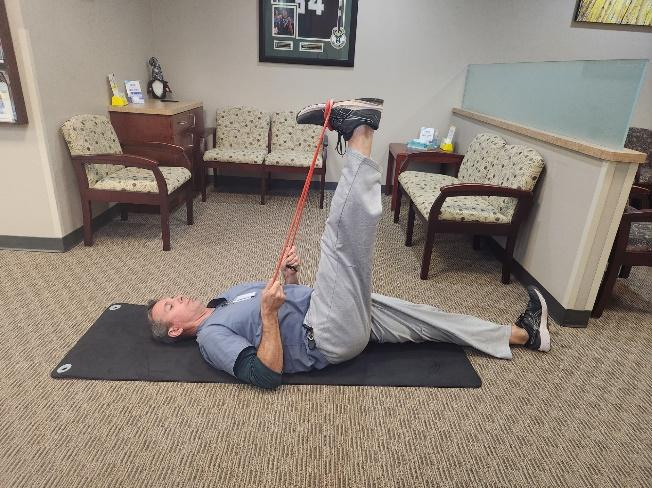
Static-active stretching is a very safe form of stretching that happens by taking the muscle into a lengthened position and then actively contracting the opposing muscle to aid in the stretch until you feel an additional stretch in that muscle. You will generally hold the stretch for only 10-15 seconds. A common active stretch is for the hip flexor, where you would kneel down on one knee, and then contract the glutes to feel a stretch in the front of your hip. By doing so, you are pulling your hip into a posterior pelvic tilt, creating length through the front of the hip.
Another form of static-active stretching would be forms of yoga that require you to hold a position/stretch for a desired time. The reason that this form of stretching is safe is because you are using your own body to stretch as opposed to using a prop or a partner to stretch you beyond maybe where your body is comfortable. You see, your body won’t allow itself to go into an unsafe position. As a result, this is a great form of stretching for anyone at home, the elderly, or even those recovering from an injury once stretching is recommended.
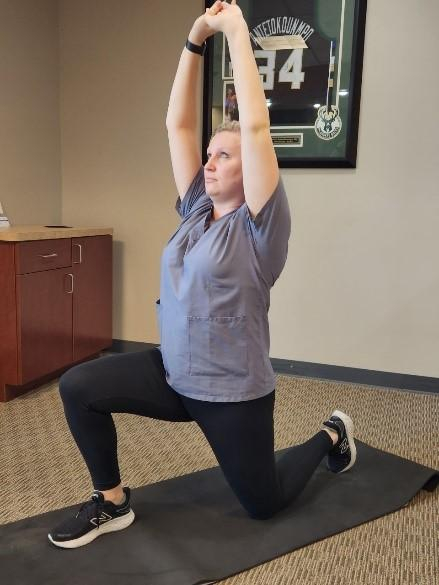
The next form of stretching I want to talk about is dynamic stretching. Dynamic stretching is similar to the static-active stretching in that it is using your own body to stretch the muscle. The difference is that for dynamic stretching, you are stretching the muscle through a controlled movement. An example of dynamic stretching would be a walking lunge for the legs or a rotational reach through for the thoracic spine, and even yoga once again since some forms of yoga flow through the movement instead of holding a stretch/position.
Dynamic stretching is designed to get your muscles warmed up and ready to perform a movement or activity by going through a motion that you may perform during your activity but at a slower pace so that when you are ready to call on the muscles to perform that action, they have already performed them. This makes dynamic stretching ideal to do prior to playing a sport, exercising, or performing an activity where your body may be put in compromising positions to warm up the muscles to reduce the risk of injury.
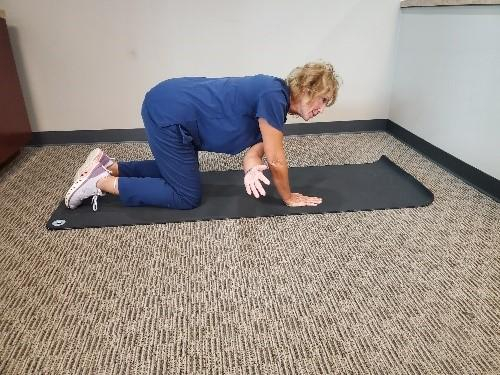
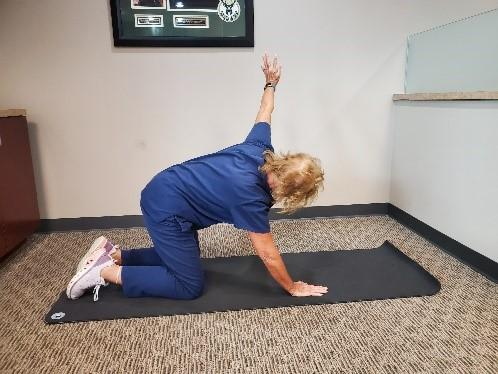
Finally, there is ballistic stretching. Ballistic stretching is a form of stretching that requires the individual to move in bouncing motions to stretch the muscle beyond its normal range of motion. The bouncing is used to then hyperextend the body to stretch it to elicit a response in the muscles to get them to fire quicker to be able to respond to quick change in direction. Think about stretching your inner thighs and hamstrings by sitting on the floor with your legs out in a “V” and then reaching forward, bouncing at the hip to reach further each time.
This style of stretching is often performed by athletes in sports such as basketball, tennis, soccer, and football prior to the sport being played. However, there are risks involved in ballistic stretching as it has been shown to induce injuries in the non-athlete since they are not used to moving at such speeds or may not have the strength to control their bodies as they do. Some studies have also shown that it may cause muscle weakness or tendon tears due to the high intensity nature and/or potentially uncontrolled movement of it.
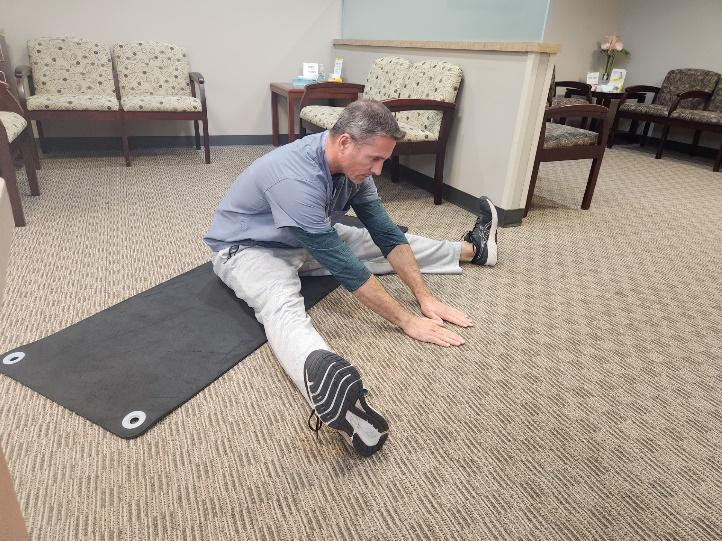
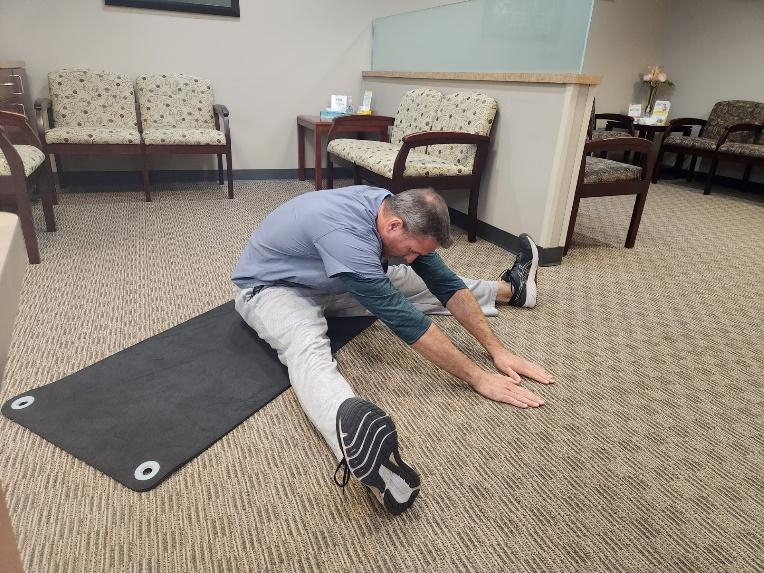
So how do you know what type of stretching is ideal for you? Base this on the purpose of your stretching and what you may be doing directly after the stretching. If you are simply using the stretch to loosen tight muscles, help rehab from an injury, or just feel good, you may want to go for a short walk to warm the body up first and then perform either of the static stretches, passive or active. If you are going to exercise, play a sport, or do some other type of activity in which the muscles may be challenged in greater ranges of motion, then dynamic stretching would be ideal. Again, ballistic stretching isn’t recommended for the non-athlete, but if you are an athlete, then a combination of dynamic and ballistic stretching might be the best option to get you completely ready for the competition. Either way, before doing any type of stretching or activity, you need to ask yourself why I am doing this, what is the desired result of doing this, and is it the best style for the activity I plan on doing.


